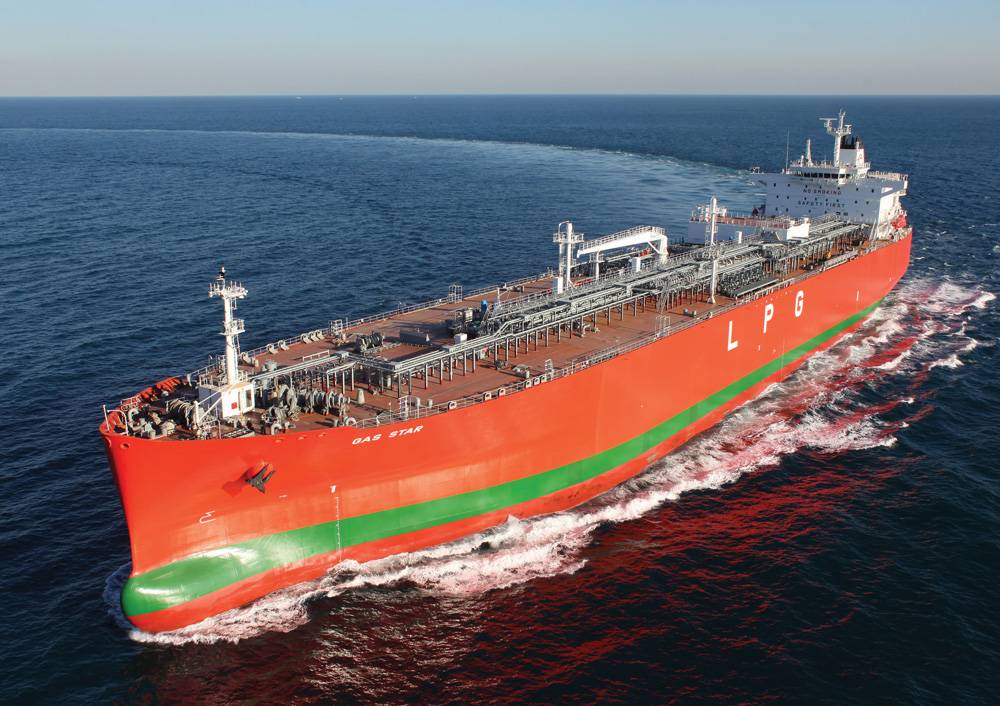South Korean shipbuilders are expected to win an increasing number of contracts for LPG vessels with the number of ships older than 15 years on the increase.
At present, the number of medium-sized LPG carriers that have been in operation for more than 15 years is 46. The number is estimated to rise to 62 in 2023 and 77 in 2024. On the other hand, the number of LPG carriers scheduled to be delivered this year is three, in 2021 is seven and in 2022 is 10.

The same applies to very large gas carriers. In this category, the former number is 70 now and estimated to reach 79, 87, 102 and 113 in the following years. In contrast, the latter is 24, 26 and 16, respectively.
LPG carriers currently use bunker oil. These are predicted to be replaced with vessels using LPG in view of environmental regulations and fuel economy competition. According to industry sources, medium-sized gas carriers using LPG are approximately 900 percent more efficient than their counterparts using bunker oil when it comes to fuel costs for 20 years.
In the meantime, Hyundai Mipo Dockyard and Hyundai Samho Heavy Industries are scheduled to deliver their LPG vessels in June and July next year after contract signing in July and August 2019, respectively. Those are the world’s first newly-built medium-sized and large LPG vessels, respectively.
On Nov. 10, Hyundai Heavy Industries replaced the engine of its five-year-old 84K LPG carrier with an LPG engine and successfully completed its trial operation. It is the world’s first LPG vessel. As compared with bunker oil vessels, its fuel consumption, greenhouse gas emissions and sulfur oxide emissions at the maximum speed are 90 percent, 80 percent and 3 percent, respectively. South Korean shipbuilders have won a total of 35 contracts for LPG vessels so far, including 28 of Korea Shipbuilding & Offshore Engineering.
Source: Business Korea